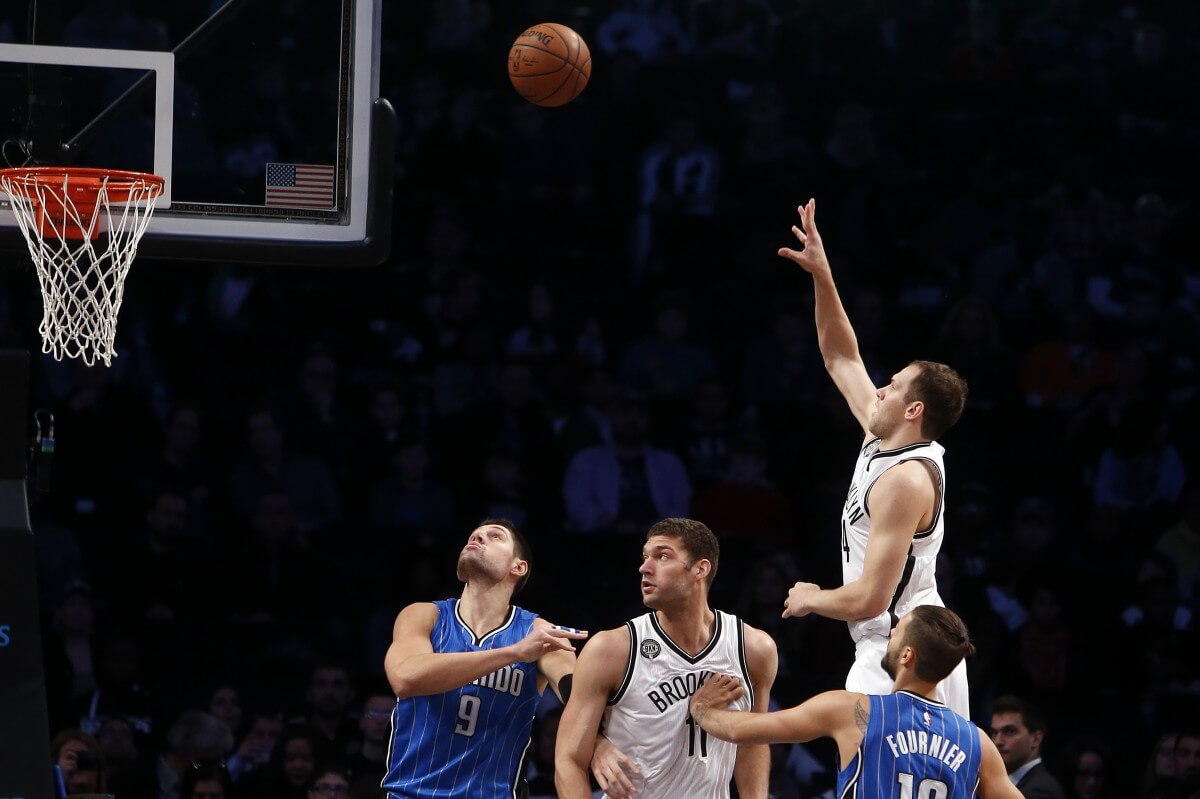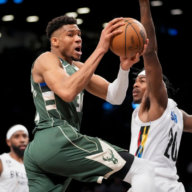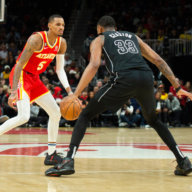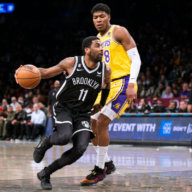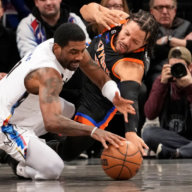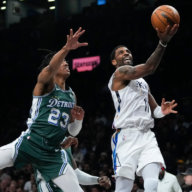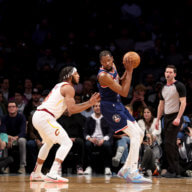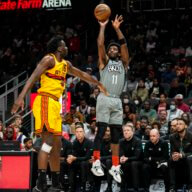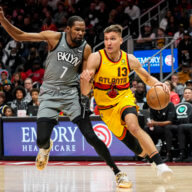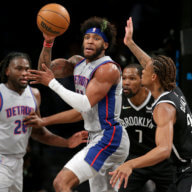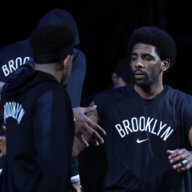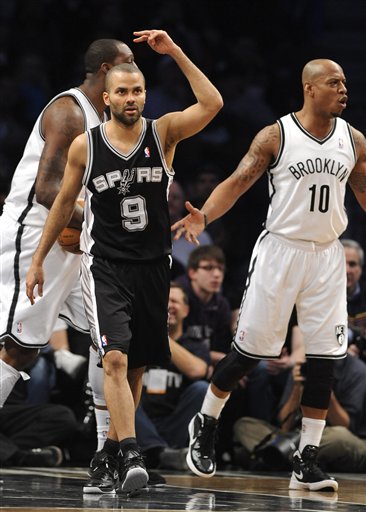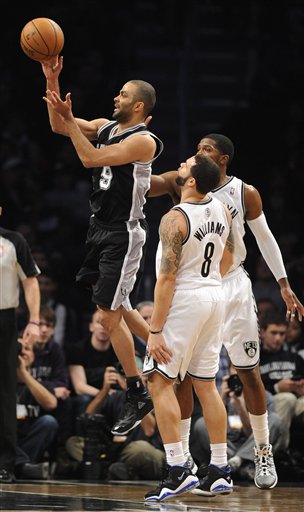Jarrett Jack caught the pass from Kevin Garnett, and the plan was already in motion. Jack, fewer than three minutes into his first start of the season on December 21, put up a quick shot-fake, sending eager Detroit Pistons guard Brandon Jennings flying past at the three-point line.
With space to run, Jack headed towards the rim, seemingly to crash into a Pistons defender and draw contact for two potential free throws. Josh Smith and Andre Drummond, both in anticipation of the drive, hung back to defend vertically at the rim, with Drummond keeping his hip on Mason Plumlee to avoid a lob pass.
But by the time the Pistons realize what’s happening, it’s too late. With about four feet of space left between him & Smith, Jack arced a one-handed push shot high into the air, just over Smith’s swinging left hand and into unblockable territory. On the other end, it falls through the net. Two points, Jarrett Jack.
It’s one of the NBA’s lost arts, going the way of the set shot and the seven-footer who can’t play help defense. But when it comes to this playground trick, there’s no team more prolific than the Brooklyn Nets: since the team moved to Brooklyn in November 2012, no team has made more shots classified as “floaters,” and they rank first in the NBA this season, with 82 floaters made[note]All floater data per NBA stats website NBA Savant through February 8, 2015. Slight discrepancies may exist in the data.[/note].
There is, of course, a cruel irony in this: the Nets are the league’s best at something that requires you to play under the rim. They’re perhaps the least athletic team in the league from top to bottom; their 154 dunks this season ranks 21st in the NBA, and without Mason Plumlee’s contributions, they would rank last by a wide margin. (The entire Nets roster combined trails Plumlee in dunks, 86-68, as of Monday morning.) The shot alone hasn’t propelled the Nets to greatness, at least not this season: they rank 24th in the NBA in offensive efficiency. But while most teams can boast at least two high-flyers or big men that often throw down, the Nets don’t — and in a rapidly evolving and athletic NBA, they have to get clever to manufacture points.
“We don’t have the most athletic guards,” Joe Johnson admitted. “Myself, Jarrett. Deron (Williams)’s a bit athletic. But for the most part, we’re all guys who can really handle the ball and get in the paint whenever we want. The floater’s an easy shot for us. It’s all about touch.”
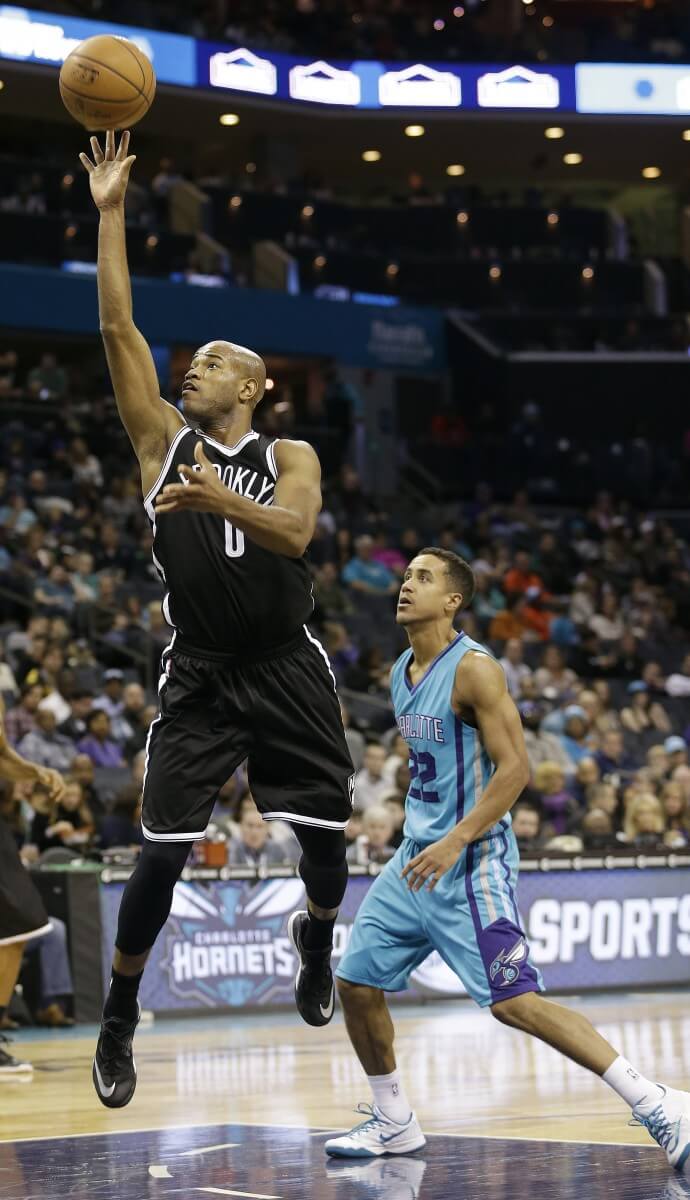
It’s not just tricky, it’s effective. Jack has made 38 of the team’s floaters this season, leading all NBA players and hitting more than all but 11 NBA teams, connecting on a ridiculous 69.1 percent of his attempts. He hit 30 of 38 floaters last season (78.9 percent), and has ranked sixth or higher in floaters made in each of the last four seasons, each season coming with a different team.
No one with more than 55 makes can best his field goal percentage on floaters in that time. Not Tony Parker (121, 59.9%), not Jeff Teague (114, 52.8%), not Chris Paul (72, 58.5%). It’s no coincidence that Jack far and away leads the league this season while playing major minutes for a Nets team without Deron Williams for long stretches.[note]Incidentally: Williams, with 47 floaters since the team’s move to Brooklyn, ranks 13th in the NBA in that span.[/note]
Among the guards, there’s a shared sense of trickery. Most of them grew up the smaller man on the totem pole, trying to succeed against older and bigger players.
Jack developed his floater as a preteen in the Washington, D.C. area. “I grew up in a neighborhood where I wanted to play, but all the guys that was there was bigger than me[note]Grammar [sic][/note],” Jack said. “So that was the only shot I could get off and not get blocked. I’m in elementary, trying to play against guys that are in the early stages of high school. So clearly they’re physically bigger than me, but I wanted to go out there and be effective.”
“One thing I had, I was fast. So when I got by guys, to not allow them to be a (shot)blocker, I had to shoot the ball like, really, really high,” Jack added, raising his hand for emphasis. “So I developed a touch for it, I practiced it all the time, and it’s something that bails me out of trouble a lot.”
Little has changed for Jack: whether it’s in the NBA or at a playground in Fort Washington, Maryland, he’s still trying to sneak one over the bigger guy.
Listen to Jarrett Jack Break Down The Teardrop:[note]Video editing and GIFs, as always, thanks to video coordinator Cody Hart.[/note]
I just gauge the big. Usually it’s either coming from a breakdown in pick-and-roll coverage or somebody broke down and they close out. And just assessing the situation. Not going too fast, slowing down, because usually if you’re going too fast you’re going to run over somebody if they step up and take a charge. So usually I have Brook (Lopez) or Mase (Mason Plumlee) on the baseline, and if the big doesn’t step up with me, I shoot my floater. If he does, then you see me throw the lob to Mase … I know it sounds old and simple, but it’s all in reading how the defense plays you.[note]Edited for space.[/note]
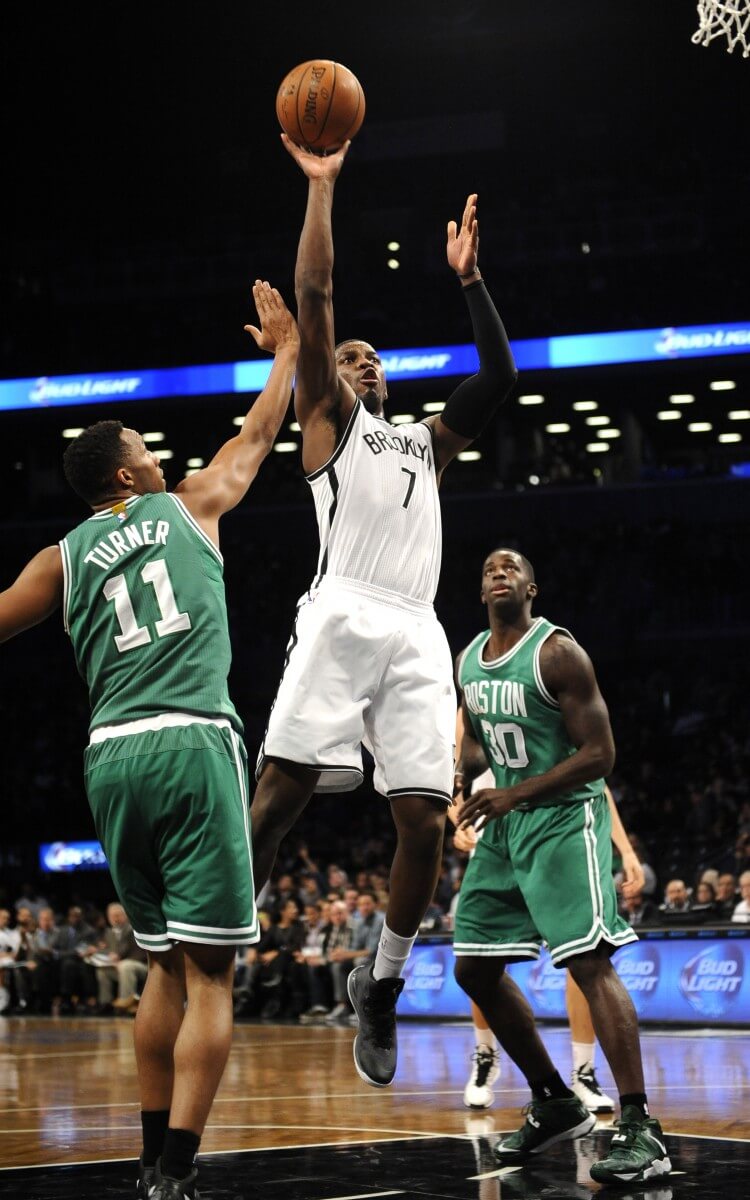
Johnson often feels the aches and pains of being a bruising 33-year-old NBA guard. It’s why he does hot yoga religiously to stay fresh. It’s also why Johnson’s developed his floater, pulling it out in game-winning and game-tying situations. It’s his rock, and in the regular season, he’s hit 89 of them since joining the Nets in 2012, fourth-most in the league in that time.[note]Among those above him: Jarrett Jack, of course.[/note]
The 6’7″ Johnson can touch the rim and dunk now. But he chooses not to, instead relying on shots like his floater inside. “I’m not a high-flyer,” Johnson laughed. “I’ll leave that to guys like Mason, and Alan (Anderson), and those guys. I could care less about a dunk, honestly I just try to get the two points. … (dunking) takes a lot of energy for me.”[note]Yes, you read that right: Joe Johnson referred to Alan Anderson as a ‘high-flyer.’ In case you were wondering how explosive this team is.[/note]
But the floater isn’t just a shot for David. Goliath needs a soft touch, too.
Listen to Brook Lopez Break Down The Center’s Teardrop:
I think it just came with working with good guards in the pick-and-roll. When I’m rolling a lot, getting to the basket, they throw that bounce pass, it’s easy for me. It’s in rhythm. When I pick it up, I’m taking a one-two step, right to the basket and kind of just all my momentum into the floater, you know. It’s just a natural shot for me. It’s something I’ve worked on … A lot of it’s timing. When the guard throws me that pass in the pick-and-roll, and I’m really stepping into it and I’m at the elbow, I step into it, I see my guy coming, and I have to judge how he’s coming. Is he coming at me hard, so I can drive? Or is he kind of staying back, so I have time to really get it up?[note]Edited for space.[/note]
During Nets pre-game warmups, Brook Lopez has played a game with assistant coach & former NBA center Joe Wolf called “5-2-1,” requiring Lopez to hit five hook shots, two dribble-drive floaters, and one three-pointer from five different spots, only moving from one section of the drill to the next by converting.[note]Wolf often has to take jump shots of his own, depending on Lopez’s performance, though it was not exactly clear to this particular writer just what necessitated Wolf to shoot.[/note]
It’s one of the many drills Lopez does to perfect his shooting touch around the basket, one of the best for an NBA big man. He’s worked on his under-the-basket, off-the-ball game more seriously since going to Stanford and entering the NBA, possibly since his injured right foot has left him less mobile. “It’s just become more of a focal point,” Lopez said about shooting the floater. “Since it has, I’ve been working on it more and more just getting in the gym.”
Lopez credited working with smart guards, and knowing just the proper footwork to get himself in place to loft one in the basket. Like Jack, Johnson, and countless players before him, Lopez’s short game started with the desire to threaten defenses inside with an unguardable weapon that prides finesse over force. “I’ve always, always worked on my touch,” Lopez stressed. “Since I’ve been playing basketball, I’ve prided myself on my touch.”

